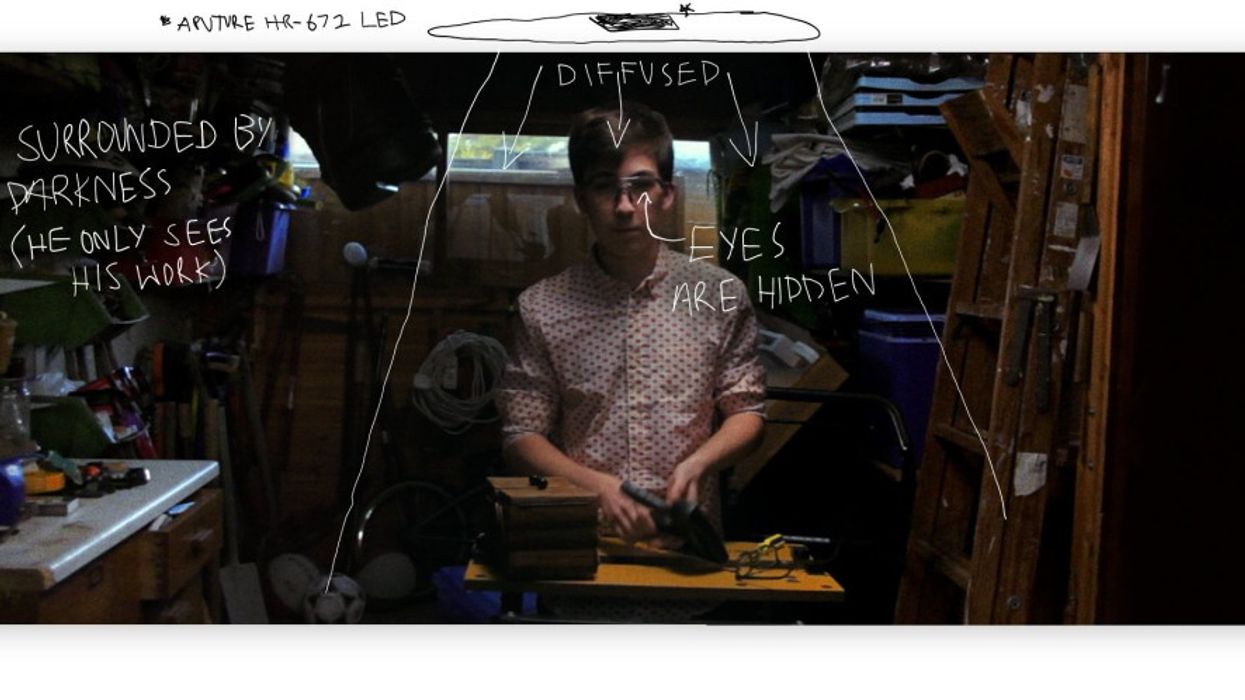How to Make Compelling Lighting Decisions that Support Your Story
It's something that aspiring cinematographers hear all the time: "Make sure your lighting supports the story you're trying to tell." But how the hell do you actually accomplish that?

Over the past few months, Simon Cade of DSLRguide has become one of my favorite YouTubers for cinematography tutorials. Sure, he may be young – as people are always quick to point out in the comments – but his understanding of advanced cinematography concepts and techniques goes well beyond his years, and his ability to explain and demonstrate them is excellent. Don't believe me? Just check out his previous videos on storytelling through composition and this beautifully-executed Scrabble metaphor for filmmaking.
Simon's newest tutorial attempts to answer the question at the top of this article. How the hell can we use light to tell better stories? It's an incredibly difficult question – the answer to it is situational and always shifting – but Simon has some great actionable tips for how to think more critically about your lighting:
There are four key considerations to make when choosing how to light a character or a scene:
- Light Placement: The angle at which the light hits your subject. This determines which parts and how much or how little of the character's face falls off into shadow.
- Light Quality: The hardness or softness of the light. Soft light is the standard because it's more flattering and aesthetically pleasing from a traditional perspective, but don't shy away from hard light sources if it will help key the audience into a character's state of mind or emotion.
- Light Intensity: The brightness (or lack thereof) of different lights throughout the scene. Manipulating intensity is a great way to create contrast in your scene and to guide the viewer's eye to key points in the frame. Varying intensities of light are also an incredibly effective way to create depth in a shot.
- Light Color: From a practical standpoint, color temperature is a great way to key the audience into the practical motivations for your lighting choices. Light coming in through a window during the day will likely be a clean white 5600K, while at night it might be cooled down a bit, maybe 6500K, in order to emulate moonlight. Interior lighting (with the exception of fluorescents) will traditionally appear warmer, usually in the neighborhood 3200-4000K. We also know that color can inherently affect the perceived mood of a scene, so it can be used as a purely expressionistic tool as well. But you have to be careful when using oddly colored light because it can be distracting depending on the type of film you're making.
Lastly, it's always important to remember that none of these rules are set in stone. The idea here is simply that you think critically about your lighting decisions so that they support what you're trying to accomplish from a storytelling and emotional standpoint, not that you're following a prescribed set of lighting rules that are applicable to every filmmaking situation ever. No such set of rules exists, nor should it. Lighting is a powerful tool, and its meaning constantly changes depending on the context in which it's used.
What are your tips for using light as a storytelling device? Share them with us down in the comments!
Source: DSLRguide












